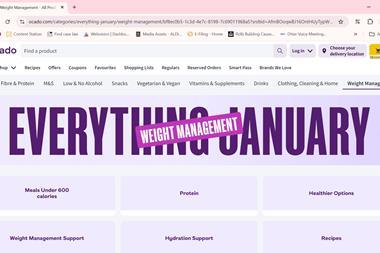When Tesco dramatically bumped up the number of products in its Creamfields tertiary dairy line recently, it took many in the industry by surprise. After all, wasn’t Creamfields a relic of the ‘discounter brands in Tesco’ initiative of three years ago, which was going to be killed off by the retailer’s powerful new venture brands?
Tesco clearly thinks otherwise. It has nearly trebled the number of Creamfields products over the past year, and - by extending the brand into reduced-fat cheese and a wide range of yoghurts - has made the portfolio not just larger but also, arguably, more sophisticated.
So just what is the point of the Creamfields brand? How does it fit in with Tesco’s own-label tiers and venture brands such as Yoo yoghurts and Mu cheese?
Tesco is keeping its cards close to its chest. Asked about the rationale behind more Creamfields products, a spokeswoman says only that Tesco is committed to keeping prices down and knows its customers want a choice of quality products at lower prices. Suppliers claim Tesco’s renewed interest in Creamfields is symptomatic of an overly complex and confused own-label strategy.
“They’ve got Value, standard, Finest, venture brands and tertiary brands like Creamfields now - just how many own-label brands does one retailer need?” says one dairy supplier. “Everybody thought they’d kill off Creamfields, which was a bit of a quick fix in response to Aldi, and start again with venture brands. Now they’ve one brand too many and are just jumping from one thing to the next.”
Brand experts aren’t overly impressed with Creamfields’ positioning either. Deborah Carter, senior consultant at Dragon Rouge, says while venture brands such as Mu and Yoo are well designed to compete favourably with brands, Creamfields might struggle.
“The logo and typography are basic and disjointed, and the overall appearance looks old-fashioned and cheap,” she says. “Of course, if the price is attractive then that’s a bonus, but I’m not sure savvy shoppers of today buy on value alone.”
The eclectic mix of products doesn’t help either. Whereas many in dairy understand why Tesco decided to use Creamfields rather than its standard own labels to match the discounters on liquid milk - it sells four pints of Creamfields milk for £1 compared with £1.18 for its standard own label - few understand why products such as a reduced-fat mozzarella ball (79p for 125g) should be offered under a discounter line.
“In Continental cheese you don’t need discounter brands,” says one cheese supplier. “What you need is brands giving consumers reassurance that when they spend cash they will get value, quality and a good delivery. Tertiary brands don’t deliver that.”
This is echoed by a UK supplier: “It’s just an incredibly odd line with some strange products in it.”The extension of Creamfields is also a sign that - despite executives’ assurances that Tesco wants to focus on innovation - the retailer is running out of ideas, claims another supplier. That is sending an alarming signal to suppliers of brands, he adds.
“All they’re doing is duplicating products all the time and filling up shelf space there’s no innovation in that. It undermines all the efforts real brands are making in creating value.”
And suppliers may well have to brace themselves for more competition from tertiary lines. Tesco’s resurgent interest in discounter brands does not appear to be limited to dairy and Creamfields - the retailer has started adding new lines to its Wheatfield Bakery tertiary bread range, too.
For brands looking to get products on to shelves, competing against tertiary lines as well as venture brands and own-label products could soon become a staple part of doing business with Tesco. Many could find themselves crowded out.
Sign in to comment on this article
Not logged in before? Register for FREE guest access today.
You will be able to:
- Read more stories
- Receive daily newsletters
- Comment on stories
Advert



















No comments yet